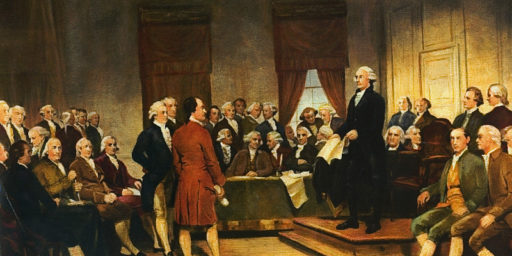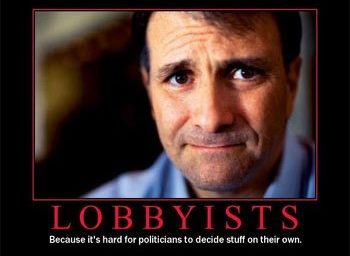Lobbying and Sunk Costs
Economist David Zetland explains the political economy of lobbying by auctioning a dollar bill for $3.75.
As he explains:
This set of incentives (“on the margin”) makes it rational to keep raising the stakes given that you have bid because winning always has a higher payoff than losing. The “right strategy” is, of course to not bid at all. (As Joshua, the computer, says in Wargames: “Strange game. The only winning move is not to play.”)
Fifth, all-pay auctions reproduce the dynamics of political lobbying in which the politician is auctioning the wording to some law, and lobbyists from both (many?) sides are contributing money, perks and attention to get their version of the law. All of the lobbyists pay, but only the politician wins.
Now, Zetland is surely right about how sunk costs can make otherwise irrational behavior perfectly rational. But his view of lobbying is too cynical.
Yes, organized groups can and frequently do manage to get language into bills and even enact major public policies that would never come to pass if every citizen’s opinion was taken into account. But that’s a function of “who cares more” rather than bidding. Indeed, contra the “Wargames” quote, the reason the majority often loses is because they’re not playing the game.
With rare, criminal, exceptions, American politicians aren’t auctioning their positions or the language of bills to the highest bidder. Rather, the highest bidders are scrambling to get politicians who largely agree with them elected and to get those they deem persuadable to see their position.
via Alex Tabarrok




I think you are trying to draw a distinction where none exists at the end there. If a government contract, piece of legislation, pork, whatever has a value to 4 entities (individuals, firms, etc.) of $1,000,000 then it would “pay” for each of them to “spend” up to $1,000,000. Since it is in effect an “all in auction” the total sum is actually well inexcess of the $1,000,000 value. Whether it is via supporting your preferred candidate for a given election or contributing to thier PAC or whatever makes no difference really. In the end, there is a net social loss. This was noted by Gordon Tullock at least two decades ago if not longer.
Actually Tullock published that particular observation in 1967. That the social welfare loss due to monopolies was much larger than what traditional analysis indicated (the deadweight loss). Tullock reasoned that since each potential recipient of the monopoly status would recieve economic profits (part of the consumer surplus) that each potential recipient would be willing to spend up to the entire value of those economic profits. Hence the actual losses in the case of government granted monopolies would be someting along the lines of:
N*Ecnomic Profits + Deadweight Loss.
Where N is the number of potential recipients of the monopoly.
More here.
Oh, and a nice example of a government monopoly: intellectual property laws.
Nice quote,